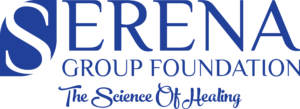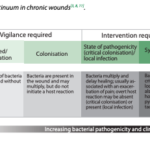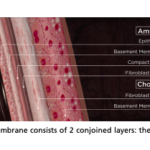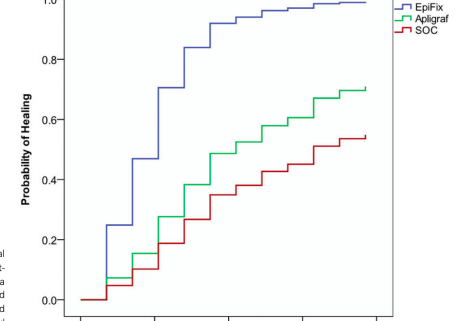
Treatment of chronic diabetic lower extremity ulcers with advanced therapies
Abstract Advanced therapies such as bioengineered skin substitutes (BSS) and dehydrated human amnion/chorion membrane (dHACM) have been shown to promote healing of chronic diabetic ulcers. An interim analysis of data from 60 patients enrolled in a prospective, randomised, controlled, parallel group, multi-centre clinical trial showed that dHACM (EpiFix®, MiMedx Group Inc., Marietta, GA) is superior to standard wound care (SWC) and BSS (Apligraf®, Organogenesis, Inc., Canton, MA) in achieving complete wound closure within 4–6 weeks. Rates and time to closure at a longer time interval and factors influencing outcomes remained unassessed; therefore, the study was continued in order to achieve at least 100 patients. With the larger cohort, we compare clinical outcomes at 12 weeks in 100 patients with chronic lower extremity diabetic ulcers treated with weekly applications of Apligraf (n = 33), EpiFix (n = 32) or SWC (n = 35) with collagen-alginate dressing as controls. A Cox regression was performed to analyse the time to heal within 12 weeks, adjusting for all significant covariates. A Kaplan–Meier analysis was conducted to compare timeto-heal within 12 weeks for the three treatment groups. Clinical characteristics were well matched across study groups. The proportion of wounds achieving complete closure within the 12-week study period were 73% (24/33), 97% (31/32), and 51% (18/35) for Apligraf, EpiFix and SWC, respectively (adjusted P = 0⋅00019). Subjects treated with EpiFix had a very significant higher probability of their wounds healing [hazard ratio (HR: 5⋅66; adjusted P: 1⋅3 x 10−7] compared to SWC alone. No difference in probability of healing was observed for the Apligraf and SWC groups. Patients treated with Apligraf were less likely to heal than those treated with EpiFix [HR: 0⋅30; 95% confidence interval (CI): 0⋅17–0⋅54; unadjusted P: 5⋅8 x 10−5]. Increased wound size and presence of hypertension were significant factors that influenced healing. Mean time-to-heal within 12 weeks was 47⋅9 days (95% CI: 38⋅2–57⋅7) with Apligraf, 23⋅6 days (95% CI: 17⋅0–30⋅2) with EpiFix group and 57⋅4 days (95%CI: 48⋅2–66⋅6) with the SWC alone group (adjusted P = 3⋅2 x 10−7). Median number of grafts used per healed wound were six (range 1–13) and 2⋅5 (range 1–12) for the Apligraf and EpiFix groups, respectively. Median graft cost was $8918 (range $1,486–19,323) per healed wound for the Apligraf group and $1,517 (range $434–25,710) per healed wound in the EpiFix group (P<0⋅0001). These results provide further evidence of the clinical and resource utilisation superiority of EpiFix compared to Apligraf for the treatment of lower extremity diabetic wounds
Treatment-of-chronic-diabetic-lower-extremity-ulcers-with-advanced-therapies